Romeo Frezzi was an Italian socialist carpenter native of Jesi (province of Ancona) beaten to death by the police when he was thirty, on May 2nd, 1897 in the jail of Rome at San Michele a Ripa, while he was interrogated for the attack of the anarchist Pietro Acciarito to the king of Italy Umberto I.
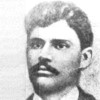
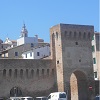
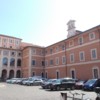
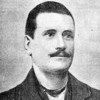
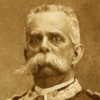
Private
life
Romeo was born on August 17th, 1867 in Jesi, to Giovanni and
Palmira Felcina, and in October 1891 he moved to Rome, where he
took up his residence. On October 16th, 1892 in the municipal offices
of the Capitol he married Assunta
Franchi, ten years older than him, from Matelica, in the province
of Macerata. The marriage was celebrated by professor Orazio
Marucchi, city councilor for Catholics and world famous archaeologist.
Romeo and Assunta had met in Jesi when he had gone to polish furniture
at the home of a lawyer for which she worked as a maid. According
to some sources, the couple had two children, but it doesn’t
appear from the population registers, and no children are mentioned
in the stories related to the Frezzi case.
In the capital Romeo began working in the carpenter's shop of
Oreste Palmieri in 17, via della
Chiesa Nuova, and went to live with Assunta in 29A,
via Margutta (no 19 according to the death certificate, no
59 according to a police statement). In an interview with the
socialist newspaper "Avanti!" of May 5th,
1897 ("Un delitto della polizia" i.e. "A
crime of the police") Oreste Palmieri told: "his
conduct was, in all respects, excellent. He was devoted to work
and had very honest customs, he went early at home and didn’t
hang out with bad companies. He never expressed bloodthirsty intentions.
In the morning he reached the workshop absolutely on time, and
never lost any working day due to negligence". Romeo
had won the first prize in the carnival competition for a Greek-style
loggia that he had built for Countess Ubaldelli. Avanti! of
May 4th, describes him as "a
lean young man
with dark curly hair, with lively eyes of a swift and intelligent
worker".
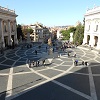
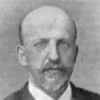
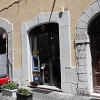
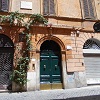
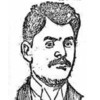
Political
life
The police filed
Frezzi as a "dangerous anarchist", although he
was in fact a socialist, after being a republican in the past.
The police and the bourgeois press were highly confused between
the various ideas opposite to the system and to the monarchy,
and they often classified under the definition of "anarchists"
the subversives of any tendency. This label was also used in an
instrumental way, because the arrest of an anarchist caused less
alarm in public opinion than the imprisonment of a republican
or a socialist (Coletti).
From a note published
by Avanti! of May 5th, 1897 it comes out that Frezzi
"in his early youth had belonged to the republican circles
of Lazio, then when the section of the Socialist party in Rome
was founded, he had entered resolutely into our party, embracing
the new faith with all the impetus of his sincere generous soul.
Therefore the lie of the police headquarters that names him a
“dangerous anarchist". looks even more cheeky".
On the contrary, the "Giuseppe Garibaldi" Society
communicated to the socialist newspaper that Frezzi had been a
member of it since the foundation and was a member of the Italian
Republican Party.
Romeo however attended, although not regularly, the meetings of
the Socialists in the section of via
del Pantheon, 57, as evidenced by the notes that the City
Guards sent to the police headquarters, specifying the opening
and closing times and the participants in the meetings. Vittorio
Lollini, the future solicitor of the widow of Romeo, and the two
satirists of Avanti!, Guido Podrecca,
author of the texts and cartoonist Gabriele
Galantara also attended the meetings at the Socialist section
(AdS).
After his death, Eolo Varagnoli on "L'Avvenire sociale"
of May 9th, 1897 ("Orrendo assassinio!..."
i.e. "Horrible murder") so remembered him: "He
was a proud rebel. And this explains why he belonged to the Republican
party, to the Socialist party, and why was he always involved
in the stings against anarchists".
In October 1895 he was sentenced to eight days in prison for a
"seditious demonstration" against Prime Minister
Francesco Crispi, who spoke at the Argentina theatre, on the occasion of
the banquet given on the eve of the May 1893 election.
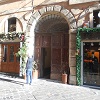
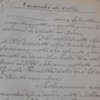
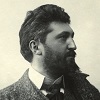
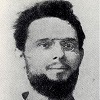

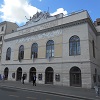
Acciarito's
attack
Shortly after
2.30pm on Thursday April 22nd, 1897 Pietro Acciarito, an anarchist
locksmith from Artena (province of Rome), tried
to kill king Umberto I with a dagger
he had built himself, on the Via Appia road, at Ponte
Lungo (the place is described as "opposite vicolo
del Mandrione" or "between vicolo della Morana
and cascinale dei Voltoni"), while he was heading
on an open Victoria carriage to Capannelle
racecourse in Rome, to attend Royal Derby. The occasion of the
king's attendance in the Derby was the celebration of his 29th
wedding anniversary with Queen Margherita. The attack was unsuccessful
because the coachman Arcangelo Serpe managed to steer the carriage,
hitting the assailant with a mudguard and making the stab miss
its target, tearing instead the carriage's folded bellows top
(G.A.R.). To cavalier Leopoldo Galeazzi,
inspector general of public security, who inveighed against him
for having attacked the king, Acciarito replied: "We got
nothing more to eat. Something had to be done!" (Felisatti), and during the trial he said
he was particularly indignant for the fact that the king had offered
a 24 thousand liras prize to the winning horse, while many Italians,
including Acciarito, were in serious financial straits (Centini).
In order to give a measure of the amount given as a prize to the
horse, it must consider that at the time of Acciarito's attack,
the yearly average wage of a worker was 680 liras, the wage of
a peasant was 150 liras plus a little surface of wheat and one
of fava beans, while women's wages where around 200 liras (G.A.R.).
Already in the past Umberto had been the target of attacks: the
one who went closer to succeed was that of November 17th,
1878 in Naples,
by Giovanni Passannante, from Salvia
di Lucania. After three years from the attack on via Appia, however,
Umberto I was killed in Monza by the
anarchist Gaetano Bresci (see my
webpage on him).
After the Acciarito attack,
the investigators needed to find his accomplices to prove the
existence of a conspiracy, even to redeem the serious flaw in
surveillance that had allowed the assaillant to approach the king
with a weapon. As a result, numerous anarchists, socialists and
republicans were held and interrogated by the police, mainly in
Esquilino quarter, where in via Machiavelli the assaillant lived.
Many of the arrests were illegal, because they were not authorized
by a magistrate. The detainees were locked up in the former convent
of San Michele a Ripa, turned at the time into a kind of depot
of the police headquarters, garrisoned by sub-sergeant Domenico
Mellace and by six guards, Romolo Omut, Antonio Mazzaglia, Giovanni
Campana, Domenico D’Avanzo, Filippo Sinopoli and Bonfiglioli.
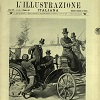
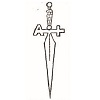
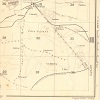
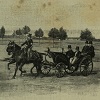
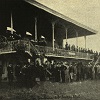
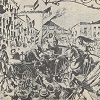
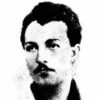
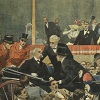
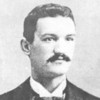
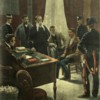
Frezzi's
arrest
Six days after
the attack, Wednesday, April 28th, the police went to the former
home of Romeo Frezzi, where the landlady, Ms De Bianco, gave them
the new address. The following day, Thursday, April 29th,
at noon, police delegate (commissioner) Palmieri and two guards
went to Frezzi's house in via Margutta, where they found his wife,
while Romeo was at work in the shop. The delegate asked Assunta
to go with them to the shop, where she entered first and worriedly
hugged her husband, who reassured her, since he had committed
no crime. When they returned together to Via Margutta, the search
was carried out in the presence of the Frezzis and pamphlets and
a group photo of eight socialists were found, which were seized
with the notice: "This evening you can come and take them
back to the police headquarters".
From the police headquarters, however, Romeo Frezzi never returned,
but he had to undergo for three days a harsh interrogation by
Inspector Luigi Vescovi. On Saturday May 1st
delegate Alcide Luciani, together with inspector Vescovi, went
specifically to question him from the police station, then hosted
by the convent of the Servites in
San Marcello al Corso, to the prison of San Michele a Ripa, where
Frezzi had been transferred in the meantime.
The
picture of the eight socialists
The photo seized
from Romeo Frezzi, taken a year and a half earlier by the photographer
Fiorani of Piazza Guglielmo Pepe, represented a group of eight
socialists, one of whom was holding a large portrait of Nicola
Barbato, the socialist leader from Piana
degli Albanesi (province of Palermo) who had been one of the
leaders of the Sicilian Fasci riot of 1894, and which in early
1897 was in Crete to fight alongside the Greeks for independence
from Ottoman Empire.
The persons portrayed in the picture were socialists from Mercato
Saraceno (province of Forlì, in Romagna), some of which
were resident in Rome: Tarciso Zappi, Giuliano Pierantoni, Giovanni
Pieraccioni, Angelo Moroni, Secondo Orsini and Pellegrino Zani,
and also appeared Cherubino Trenta, also from Romagna. and Pietro
Acciarito, partially hidden, which at the time of shooting had
joined the group by chance. In the large format picture, the group
was standing by a wall on which the writing "Viva il Socialismo"
(“Long live Socialism”) appeared. Frezzi explained
that he bought the photo being an admirer of Barbato, while he
didn't know Acciarito, nor the other people portrayed (Fasanella et
al.). The managing
director and editor of Avanti! Cherubino Trenta had the
photo and offered it to the newspaper, which refused it; then
he offered it to other newspapers, because it portrayed, among
others, Pietro Acciarito (Felisatti).
The presence in the photo of the attacker made the image become
a fundamental tool for the investigators, to try to prove the
existence of a conspiracy, since any other useful clue for this
purpose were missing.
The
murder
Sunday May 2nd,
probably around 3 pm, Romeo Frezzi died at San Michele, and the
red herring machine immediately started up, as in many other cases
in the following decades. The death was attributed to suicide
with this note from the infamous "black book" of the
police, taken from Avanti! of May 4th:
"Today, at 5pm, a certain Frezzi Romeo, 29-year-old, carpenter,
anarchist, held for public security measures committed suicide,
beating his head against the wall" and later: "subsequently
Frezzi's body was visited by Dr. Malpieri and not having found
any apparent injury he believes that Frezzi himself died of aneurysm.
The judicial authority was informed".
According to Avanti! Dr. Malpieri, expert of the police
headquarters, spoke about the causes of death without having done
any special examination, and having seen the body when it was
already dark. The guards would have told him that until a few
minutes before the prisoner was walking quietly and then suddenly
he fell to the ground, then the doctor would have said: "probably
it was an aneurysm", putting an end to the examination.
The delegate Pasquale Minetti, sent to warn the family, did not
find his wife but a cousin to whom he said that Romeo had "strangled
on his own, compressing his throat with his hands and banging
his head on the wall".
The version of the blows to the wall was actually denied by the
fact that, apart from a wound under the chin and a swollen eye,
Romeo's head had no other signs of wounds or bruises.
The next version of the police was that of a suicide plunging
to his death from a gallery on the second floor. According to
the official version, reported by the Rome's newspaper "Il
Messaggero", at 5:00 pm on May 2nd,
Frezzi would have been allowed to get a little fresh air on a
gallery five or six meters high, facing out on a hall once used
as a church, from which he would have plunged himself down, in
the few seconds the guard Omut entered the barracks to fill up
his pipe. This story of suicide in a moment of omitted vigilance
recalls the alleged suicide of Gaetano Bresci, with the variant
of the self-strangling, in the first version, later replaced by
that of Frezzi plunging to his death.
Actually two anarchists, the student Ulderico Cerquetti and the
baker Luigi Damiani, who were detained together with many others
for precautionary reasons before Labour day of May 1st
and released on the morning of the 2nd, reported that Frezzi's cell
was on the ground floor, initially
it was number 5, very narrow and with plank-bed, and and later
no 19, equipped with cot. Later the police confirmed the location
of the cell on the ground floor, but claimed that Romeo had climbed
up a fence to the second floor in order to be able to plunge himself
down, a version hard to believe since the prisoner had not had
the prison mess, suffering of stomach problems, and was therefore
so weakened that he wasn't able to lift the trestles that held
his cot
(Felisatti).
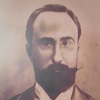
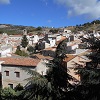
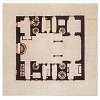
The scanty credibility
of the assumption of Frezzi plunging to his death from the gallery
was also strengthened by various other indications: the bloodstains
on his cot, the injuries to his chin and the shut, a swollen and
black left eye, for an ecchymosis produced in appearance by a
violent blow, ripped and crumpled clothes and a broken shoe, in
contrast to the decency usually shown by the socialist carpenter,
the right sleeve of the shirt completely stained in red, perhaps
due to a stream of blood coming out of the mouth, the handkerchief
torn and pierced with his teeth, as if it had been used as a gag,
and finally the awkward cover attempt put into effect by delegate
Filippo Forcheim, who had called the police headquarters doctor
to assist a sick person, and when the health officer arrived he
announced him "the patient died".
All these clues led to think that Frezzi's death was due to a
severe beating, which the culprits tried later to cover with various
subsequent versions, all in contrast with the facts ascertained
by the investigation.
Even about the hour of death there were different versions: the
one initially indicated, 5pm, was later corrected by Minister
Costa, who claimed that the "fact" had occurred around
three or four in the afternoon; according to the newspaper Il
Messaggero of May 4th, 1897 delegate Forcheim had been
informed by a phone call at 4.30 pm, while the magistrate of the
5th district had been informed at 10.00 pm,
after which he had authorized the transfer of the corpse and postponed
his visit at ten o'clock of the day after (Felisatti).
The
improbable suicide
"Avanti!"
questioned the official versions of Romeo Frezzi's death from
the earliest days, reporting news on the autopsy. The May 4th
issue stressed that: "Frezzi's death was the consequence
of an arrest carried out arbitrarily by the police headquarters,
without a mandate from the judicial authority, and of a likewise
arbitrary detention". Furthermore, the socialist newspaper
reported that: "some friends of Frezzi, arrested on the
occasion of May 1st and set at liberty yesterday,
state that from the words they heard from him neither the slightest
intention of committing suicide appeared". In addition to this Frezzi had charged
one of his friends who were about to be released from prison to
ask his wife to send him some underwear.
Eolo Varagnoli on "L'Avvenire sociale" wrote:
"I was several times a fellow prisoner of poor Frezzi,
who repeatedly showed me his innate repulsion for suicide".
Oreste Palmieri, employer of Frezzi, interviewed by Avanti!
on May 5th, 1897, said: "he never
expressed suicidal ideas. I definitely refuse to believe it. He
was very attached to his family".
In an adjacent cell some women had heard a man shout: “Oh
God! Help! Oh God! They kill me”. One of them, Antonietta
Molinari, detained as a prostitute, on Avanti! of May 17th
had declared that she had told everything to the judges, but she
had been threatened to send her back to her village, Castro de’
Volsci, in the province name Terra di Lavoro, or Caserta, currently
in the province of Frosinone.
The
autopsies
After the five-meter
plunge, the corpse would have remained on the ground until 10am
the following morning. In the late morning of May 4th,
at San Bartolomeo all'Isola mortuary,
in the presence of the investigating magistrate Francesco Bocelli,
an autopsy was carried out in the utmost secrecy by the Court
experts De Pedys and Giorgio Pardo. The autopsy revealed twenty-seven
fractures of skull, vertebral column with complete separation
from the ribs, right shoulder, ribs and spleen and pericardium
injuries. De Pedys concluded that the injuries were compatible
with a fall from a height, but Pardo, who totally disagreed, refused
to sign the expertise.
De Pedys, trusted doctor of the Minister of Justice Giacomo
Giuseppe Costa, after a first visit to the corpse had told
a friend: “If I had found Frezzi's corpse elsewhere I
would have explained his death in one and only way: a well loaded
wagon of the Gondrand brothers removal
company had ran over him” (Coletti).
Judge Bocelli then apponted the task to carry out a new expertise
to three other doctors, senator Francesco
Durante, professor Marchiafava and doctor Angiolo
Filippi, professor of forensic medicine in Florence. On June
19th the supervising experts issued their expertise,
according to which the injuries were compatible with a fall from
a height, which however had followed a violent beating suffered
by Frezzi, evidenced by distinctive injuries. The death was caused
by fatal wounds in the visceral cavity, with strong hemorrhage
(with loss of three liters of blood) along with concussion and
asphyxia due to the lungs compression caused by blood. Il Messaggero
of May 15th wrote that suicide was ruled
out and death was caused by assaults and beatings shrewdly inflicted,
the fracture of the skull was caused by blows given with a flat
object, the injuries to the liver and spleen were due to beatings,
therefore: “the fall is certainly an unsatisfactory explanation”.
The break of the thoracic vertebrae was not compatible with the
fall, because in this case Frezzi’s cervical vertebrae would
have had to break, unless he had fallen on his back, but the guards
reported that Frezzi was face down. The conclusion was that Romeo
had been the victim of a beating with sandbags and heels of shoes.
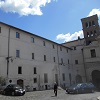
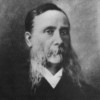
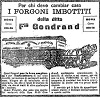
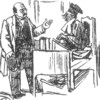
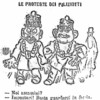
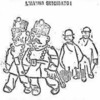

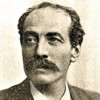
After the postmortem
examination, the medical examiner tried to verify the hypothesis
of death after plunging down, and in particular the compatibility
of Romeo's injuries with the fall from a height. A trial was then
carried out by dropping four corpses from the gallery of the police
headquarters, taken in the hospices and brought to the police
headquarters with the wagon for the public funerals for the needy.
Two of the bodies were thrown violently, and two were only dropped.
In all four bodies, medical examiners found fractures, but the
internal organs were intact, unlike what was found on Frezzi's
body (Fasanella
et al.).
A barrel of water was also thrown from the San Michele gallery
and it was found that from the barracks of the guards it was impossible
not to hear the thud of the body, thus contradicting Omut’s
version, which claimed he had heard no noise. On March 3rd,
1898, another trial was performed with a corpse thrown from a
height, and later some more trial with a corpse from Santo Spirito
hospital were made. The experts concluded that suicide could not
be excluded. even if there were no lesions to organs (Felisatti).
The circumstances of Frezzi's death resemble those of the anarchic
railwayman Giuseppe Pinelli, thrown
from a window of Milan central police station on December 16th,
1969, a hundred years and a month after Gaetano Bresci's birth,
and never forgotten.
In
the Parliament
On May 5th,
1897 in the Chamber of Deputies Minister Costa responded to the
parliamentary question of Socialist members of parliament Andrea Costa, Filippo
Turati, and others: "On April 28th,
both to perform judicial police investigations concerning the
attack committed against Her Majesty on the 22nd,
both to take precautionary measures in view of the upcoming May
1st, a domicile search was carried out by certain
Romeo Frezzi, which the public security authority considered socialist
and anarchist. In this search was found that Frezzi belonged a
photograph representing a group gathered around a well-known socialist,
and in this group there was, among others, also Acciarito. It
was natural that the authority, due to the grave responsibility
that hanged over them, should investigate what relationships could
exist between Acciarito and Frezzi, and should identify all the
others in the group, but since these investigations could not
be effectively made leaving Frezzi free, so, as a precautionary
measure they found it necessary to take him into the depot jail.
(…) Thus
May 2nd
came, when, unfortunately, Frezzi was found dead in a room of
San Michele prison, where he had been imprisoned (…) an expertise
was carried out, from which it turned out (…) that on Frezzi's
body a large number of skull fractures were found, twenty-six
if I'm not wrong, and at the same time ribs fractures with detachment
of the vertebral column, break of a scapula, ruptured liver and
spleen. A real disaster (…) the possibility that Frezzi had,
from the high of a gallery, plunged on the floor of the hall where
he was found is proven admissible"
(from
Tarantini in: Parliamentary Acts, Chamber of Deputies, Legislature
XX, 1st session, Discussion, Sitting of May 5th, 1897, pag. 349-350).
The Socialist member of parliament Oddino
Morgari observed that the police had given “three
subsequent versions of Frezzi's death … the first –
that he took his life banging his head on the wall; the second
– opposite to the first – that he died of natural death
… the third – opposite to both previous ones –
that he plunged from the gallery of the first floor ...”
(from
Tarantini in: Parliamentary Acts, Chamber of Deputies, Legislature
XX, 1st session, Discussion, Sitting of May 5th, 1897, pag. 350-351).
The Minister's surprising reply was that: “until we have
proof of the contrary” it must be assumed that Frezzi
committed suicide; and if the police headquarters has given more
than one version of the case, they did it for honesty: “I
could observe that the very fact of the double version of the
deed is to show how things were not well known, whence full good
faith in exposing both the one and the other version ...”
(from
Tarantini in: Parliamentary Acts, Chamber of Deputies, Legislature
XX, 1st session, Discussion, Sitting of May 5th, 1897, pag. 350-351).
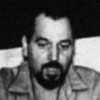

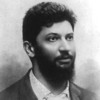
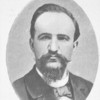
In the Senate an interpellation
of May 18th, signed by senators of four different
sides of the political line-up, Cesare Parenzo,
Corrado Tommasi-Crudeli, Francesco Vitelleschi Nobili and Stanislao Cannizzaro questioned the
ministers of Interior and Justice about what measures they intended
to take to ensure respect from the police of article 36 of the
Albertine Statute which forbade arbitrary arrests and article
68 of the code of criminal procedure which required the immediate
transfer of the arrested persons before the Court.
On March 2nd, 1898 there was a question by
member of parliament Felice Santini
on the delays in the preliminary investigation, and another by
members of parliament Andrea Costa, Enrico
Ferri and Filippo Turati. In response, undersecretary Cesare Fani declared that the delays
were due to the slowness of the experts and of the supervising
experts in examining the respective expertises. This appears as
an evidence of clear dilatory maneuvers by investigators (Felisatti).
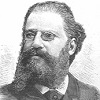
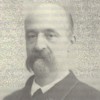
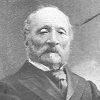
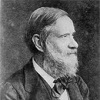
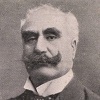
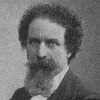
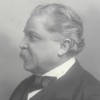
Avanti!
The socialist
newspaper Avanti! took a position on Frezzi's affair since
May 4th, 1897, two days after the assassination,
vigorously denying the thesis of suicide, clearly highlighting
the contradictions in the different versions of the police headquarters,
and playing a decisive role in pushing the judicial organs to
act according to justice.
On May 5th, 1897 Avanti! wrote: "Personal
wholeness is at the discretion of any rascal dressed as a cop.
A man's life is worth nothing", while on May 13th,
in response to criticism or threats from the newspaper L'Opinione
liberale, close to head of the government Marquis of Rudinì,
replied in an unequivocal way: "we don't give a damn for
rash denials, we confirm, one by one, our accusations. Frezzi,
we say, was murdered. The murderers belong to Rome police headquarters.
And no ... opinion of a minister or of a cop is of use to wipe
out the truth. A truth that didn't came out from our imagination,
but from the contradicting minutes of the same police headquarters,
from the expertise ordered by the Court and from our evidences.
The ... suicide of Frezzi was a fierce and crazy murder. Murder,
you got it? You cursed coward murderers!" (Avanti!, May
13th, 1897, pag. 1).
Several times Avanti! quoted an anonymous letter, signed
"a cop", delivered to the general manager of
public security, commendator Giovanni Alfazio, in which it was
explained, with many details, that Frezzi had been killed for
revenge by two former prison guards, passed to the police, quoted
with name, surname and matriculation number. The two would have
been infiltrated into Frezzi's cell to induce him to talk, pretending
to be prisoners, but the socialist would have recognized one of
the two as a guard he had met on the occasion of the detention
of two years before for the protests against Crispi, and to which
he had caused a disciplinary sanction. Frezzi would have reacted
harshly to the trap and the two would have beaten him to death,
then throwing the corpse from the gallery on the upper floor to
simulate suicide.
On May 14th Giovanni Frezzi, Romeo's father,
wrote the editor of the socialist newspaper to thank all those
who had been solid for them "against the cops, cause of
tears for an entire family".
In the following months Avanti! used the surname of one
of the torturers, Omut, as a synonym for brutal and violent cop,
to describe other acts of violence against prisoners. Furthermore,
for several days the socialist newspaper insisted on asking the
guards who knew how Frezzi had died to talk and wrote several
times that delegate Filippo Forcheim knew everything. In addition
to Avanti! other newspapers, such as Il Messaggero,
were also courageous enough to doubt the thesis of suicide and
to highlight the responsibilities of the police headquarters.
Assunta
Franchi
Romeo's wife in
the whole story of her husband's murder maintained an inflexible
attitude, demanding with great firmness and dignity to have justice,
despite the intimidation of the police. She herself said: "As
soon as I heard the news of the bad event I went to the police
headquarters where I was received by inspector Vescovi, who, confirming
the news, tried with some insistence to lead me to believe that
my husband died committing suicide. - No, it is not possible,
I said: my husband was killed, so my heart tells me. The inspector
then told me: No, don't say that because otherwise you could lose
a piece of bread forever. In that moment I was upset, so I didn't
pay attention to this sentence, but later, thinking back on it,
I had the idea that the inspector had, with those words, threatened
to have me arrested if I insisted too much in my version".
Assunta Frezzi immediately filed a complaint for her husband's
murder, which prompted investigating judge Bocelli to order an
autopsy. Assunta also became a plaintiff in the trial, assisted
by the Socialist lawyers Vittorio
Lollini and Mazza and attorney-at-law Falessi, but for this
reason some jobs were denied to her.
Reactions
On May 9th,
the celebration on Frezzi's tomb in the Roman cemetery of Campo Verano, became the occasion for a
great demonstration against the monarchy. At the cemetery the
Carabinieri police charged socialists and anarchists, who were
beaten and prevented from delivering a speech and laying the seven
wreaths they had brought, those of the anticlerical Club of Ponte
quarter, of the Carpenters Cooperative, two of the anarchists
and three of the republicans, who were instead seized. The wreaths
left to the demonstrators were taken to the monument
to Garibaldi at Gianicolo hill. Romeo Frezzi had been buried
on 7th or 8th May in section 12 of the old
sector (XIX), but on April 15th, 1907 his burial was moved, inside
the same cemetery, in the sector "Scogliera nuova del
Pincetto" in the section named "Altopiano"
("Plateau"), viale dei Platani, burial niche
22, 3rd row. At the foot of the tombstone
a scroll is placed ,
coming from the old burial , which bears these words: "A
Romeo Frezzi. Morto il 2 maggio 1897 nel carcere di S. Michele
i socialisti anarchici del Lazio nel febbraio 1905 QMP"
("To Romeo Frezzi. Died on May 2nd,
1897 in San Michele jail the socialists anarchicists of Latium
in February 1905 QMP";
QMP means "Questa Memoria Posero" i.e. "This
Memory Laid" ).
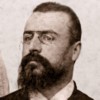
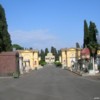
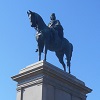
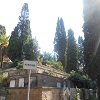
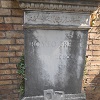
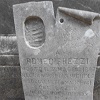
The deputation of the
Roman university students, meeting for three days in the hall
of the Brunetti circle, at Vicolo dei Soldati, voted a severe
agenda and decided to participate in the demonstration on May
9th announced by the Republican Association
of Lazio on the occasion of Frezzi's funeral. As a sign of mourning
for the murder, the "Giuseppe Garibaldi" Association
invited its sister societies to display black mourning ribbons
on their flags for three days.
In Jesi, Frezzi's birthplace, a demonstration with march was held
on May 16th, attended by over a thousand
participants, which started at 6.30 pm from the arco
Clementino, marched along via del
Corso (currently corso Matteotti), and arrived in Frederick
II square to lay a wreath in memory of Frezzi at the foot
of the plaque dedicated
to Giordano Bruno.
On May 23rd, 1897 at Campo
de Fiori a demonstration was held, announced
in the morning, although it had been decided on the evening
of 19th. In the square Matteo
Renato Imbriani Poerio, Ettore Socci, Andrea Costa and the
worker Marzoli delivered a speech, then a long march (according
to Corriere della Sera one hundred thousand people attended,
according to Avanti! ten thousand) with the flags of the
35 member associations, crossed via dei Giubbonari, piazza Cairoli,
via Arenula, via delle Botteghe Oscure, piazza San Marco, Colonna
Traiana, via Alessandrina, via Cavour, via Principe Amedeo, piazza
Guglielmo Pepe and via Tiburtina and reached Campo Verano cemetery.
At the head of the march the band of Porta Pia district played
the anthem of Garibaldi and the anthem of Mameli. A large deployment
of carabinieri on horseback and on foot, as well as many police
officers had been set up in front of the cemetery. Andrea Costa
was allowed to give a brief speech inviting calm and non-violence,
and only a delegation formed by city councilors Nissolino, Bianchi
and Lizzani bearing the wreaths was allowed to enter the cemetery,
while the demonstrators and the police remained outside.
Many people carried Frezzi's photos on their hat-bands. Assunta
Frezzi carried the flag ofAnita Garibaldi group and many women
gave her solidarity.
The photographer Francesco Fiorani in Guglielmo
Pepe square exhibited a large photo of Frezzi, at the passage
of the march, which welcomed it with great applause. The same
photographer sold the pictures of Frezzi at 50 cents each for
the benefit of the widow. Even the PSI (Italian Socialist Party)
section of Via Prina sold the portrait of Frezzi at 10 cents,
at the end of 1897 the proceeds of 500 liras were handed over
to the widow. A fundraising by Avanti! for Assunta Frezzi
collected 322.65 liras, delivered in May.
It is said that queen Margherita
had screamed and banged her fists because the demonstration had
been allowed, and it seems that even the king, who was at Monza
for his holiday at the Villa Reale,
had been furious because the procession had not been forbidden.
In several other cities demonstrations were held to demand justice
for Romeo Frezzi, but were often banned by local police authorities.
Vivaldo Lacchini on «L’Agitazione» of
Ancona attacked “the apostles of the inviolability of
life” ready to mourn the fate of a king but not of “an
obscure and honest worker" (Bellofiore).
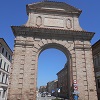
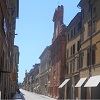
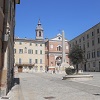
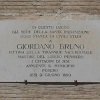
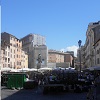
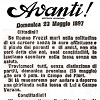
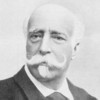
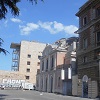
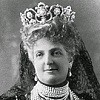
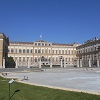
Another large demonstration
of 15,000 people against Frezzi's "moral and material"
murderers took place in Rome on August 22nd,
starting from Campo de Fiori and marching through the streets
of the city. In the Parliament, the representatives of the extreme
left demanded clearness on the case, but the head of government
Antonio Starrabba, marquis of Rudinì,
blocked every investigation to prevent it from becoming the spark
for a new insurrectional wave.
The journal “Risveglio socialista-anarchico”
("Anarchist and Socialist Awakening") of August
17th, 1901 about the alleged accomplices of
Gaetano Bresci, wrote: “After all, they must be glad that
their innocence has been recognized. With the atmosphere of servility
that infects Italy, they could have been frezzed before or after
the trial to wring possible confessions out of them”
(Ortalli). The name of Romeo Frezzi thus
became a verb, synonymous with deadly torture in prison.
Again Avanti! in May 1903 launched a campaign to do justice
to another prisoner murdered in his cell, the sailor Giacomo
D’Angelo, passed away on May 5th
in Regina Coeli jail (see my
page on him). Avanti! used the title "Il
nuovo caso Frezzi" (“The new case Frezzi”),
and when the prison doctor, Pietro Ponzi, in an interview to Il
Messaggero, hypothesized a decease «by brain congestion»
the socialist newspaper commented with sarcasm: «the
aneurysm of Frezzi!», and expressed the fear that the
culprit's impunity was used to warrant an indemnity «for
more violence and more frezzations» (Da Passano).
The
trial to the murderers
On May 15th,
1897 the Carabinieri police arrested sub-sergeant Domenico Mellace
and guards Romolo Omut and Antonio Mazzaglia, and on May 21st
jailer Giovanni Campana was detained. The Rome police commissioner
Ernesto Martelli was put under investigation and transferred to
Florence, with the motivation of a normal turnover, but in reality
for negligence also for the case of the scarce vigilance in occasion
of the attack of Acciarito (Felisatti; Fasanella et al.). Cavalier Vittorio Minozzi replaced
him. A fourth and fifth guard, D’Avanzo and Bonfiglioli,
were also arrested, all five guards were removed from the ranks
and then expelled from the Corps, while delegate Forcheim remained
in his place (Felisatti).
The investigating judge Francesco Bocelli, initially inclined
to support the suicide thesis, and the deputy public prosecutor
of the king, adv. Giuseppe Bozzi, took care of the investigation
on the murder of Romeo Frezzi in a rigorous way, while the attorney
general of the Court of Appeal, commendator Eugenio Forni, a former
police commissioner, and then coming from the ranks of the police,
insistently tried to get news on the investigations by the two
magistrates, and in particular from their superior, the Chief
Prosecutor of the King cavalier Domenico Giordani, and he was
therefore openly accused by Avanti! of wanting to make
them know to the suspects under investigation, in order to thwart
the accusations, while Forni's opposition to the second expertise
was known.
On the case Frezzi four investigations were opened: the judicial
one by Bocelli and Bozzi, an administrative one of the Ministry
of the Interior, directed by the head of division Talpo, that
of the General Directorate of prisons, by commendator Beltrami
Scalia, who had assumed San Michele jail under his direction,
withdrawing it from police headquarters control, and finally that
of commendator Barilli, head of division of police personnel.
After a few days Talpo and Beltrami Scalia inquiries were closed,
confirming the suicide (Felisatti).
The quick end of Talpo inquiry, which didn't find any result,
was commented ironically by the left-wing press, also playing
upon the name of the inquirer (in Italian "talpa"
stands for "mole").
On May 31st, a collection was launched in
the Police sections to raise funds for the defense of the guards
under investigation, urgently promoted by the commander of the
city guards Giovanni Gallo, who was then suspended by the service
for this initiative. On June 4th the prefect of Rome, count Adeodato Bonasi resigned, a deed that was
considered linked to police abuses, as in the Frezzi case. On
June 8th the head of the government Di
Rudinì confirmed to the Parliament that he had sent to
the prefects a circular-telegram with which, on the occasion of
the summons to appear issued by the investigating judge Bocelli
to police commissioner Martelli, he declared to assume the political
responsibility of the arbitrary arrests which followed the Acciarito
attack, including that of Frezzi.
On August 3rd, the Court of Rome acquitted
the guard Domenico D’Avanzo due to lack of evidence while
committed for trial: guards Bonfiglioli, Omut, Campana, Mazzaglia
and sub-sergeant Domenico Mellace for wilful murder (article 378
criminal code); delegate Filippo Forcheim for aiding and abetting
(article 225 criminal code) and former police commissioner Ernesto
Martelli for abusive search and deprivation of personal freedom
(articles 158 and 147 criminal code).
On August 15th, 1897, Minister Costa died and
this led to a suspension of the trial. At the resumption the statement
of charges was entrusted to the deputy prosecutor Scipione De
Lollis, who had already proved himself by acting as a manipulator
of the process for the Banca Romana, a clear indication of the
will to cover up, as well as the assignment of the audit of the
expert's report to De Pedys, who he managed to get back into the
game.
Il Messaggero of May 22nd, 1898 reports that in the Court
of Appeal, Attorney General commendator Totaro asked non suit
for police commissioner Ernesto Martelli and delegate Filippo
Forcheim, the following sessions were postponed, perhaps due to
disputes within the court, advisers Giusto Ponticaccia, Sebastiano
Caprino and Pietro Peroni. On May 28th, 1898 the sentence was issued:
for Martelli and Forcheim acquittal for "non-existence
of crime", and the guards for "lack of evidence",
while they were removed from the ranks. In Corriere della Sera
the news occupied only one line: “The Prosecution Section
acquitted all the defendants of the Frezzi trial”.

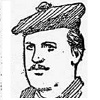
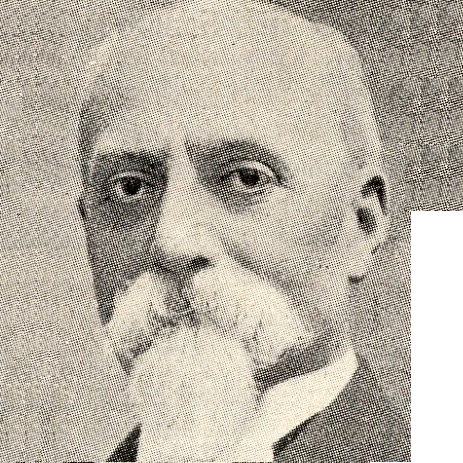
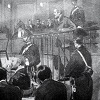
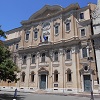
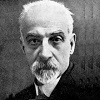
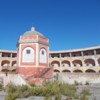
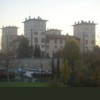

The
trials to Acciarito and his "accomplices"
On 28th
and 29th May 1897, in Rome, at the Court of Assizes
at the Oratory of the Filippini, in
piazza della Chiesa Nuova, a few meters from the shop where Romeo
Frezzi had worked, the trial to Pietro Acciarito took place, at
the end of a very brief judicial inquiry, of only 18 days (Felisatti). The accusation was supported
by Attorney General Eugenio Forni, the same one who tried to interfere
in the investigation into the death of Romeo Frezzi. The President
of the Court, Commendator Liuzzi, in a final summary of the trial
that seemed to be a indictment of the prosecution, expressed a
brilliant theory on the reasons for the attempted regicide: "What
was the purpose of Acciarito with regicide? To get rich. We know
that a regicide is often followed by a revolution and the troubled
elements find something to fish". After only three minutes
in the council chamber, the defendant was sentenced to life imprisonment.
In the Cassation trial, Acciarito was defended by the socialist
lawyer, anarchist in the past, Francesco
Saverio Merlino, who in 1900 became the defending counsel
of Gaetano Bresci. The sentence to life imprisonment was confirmed,
and Acciarito at first served in the penitentiary
on Santo Stefano island (see my
webpage), but the harsh conditions of detention destroyed
his psychic equilibrium, and in 1904 he was transferred to the
Montelupo Fiorentino hospital for the
criminally insane where he died in 1943 and where in 1910
had passed away Giovanni Passannante, who had performed the 1878
attack to Umberto (Feldbauer).
Cavalier Alessandro Doria, director of the judicial prison of
Regina Coeli, and later heavily involved in the murder of Gaetano
Bresci at Santo Stefano penitentiary, carried out an inquiry in
1897 into the existence of a conspiracy to kill Umberto I which
included Acciarito. In a trial in 1908 Doria boasted that he had
a role in opening a trial to the accomplices of Acciarito in 1897 (Santoloni and
Marcucci).
The trial against the other alleged accomplices of Acciarito,
however, ended on November 4th, 1897, the prosecution section
issued a "non suit for all the defendants for lack and
insufficiency of evidence". They were the anarchists
Ettore Sottovia, Umberto Farina and Eolo Varagnoli, as well as
Pietro Colabona, Cherubino Trenta, Aristide
Ceccarelli, Ernesto Diotallevi and Federico Gudino, these
latter five were all framed by a loathsome sham set by the investigators.
The Santo Stefano penitentiary manager, Alfredo Angelelli, availing
himself of an infiltrate, a certain Petito, placed in the same
cell of Acciarito, convinced him that his fiancée Pasqua
Venaruba had had a child with him and was in serious financial
straits, and then persuaded him to present a petition for mercy
to the king, extending it to the five unaware comrades. In this
way, a petition for mercy presented by a convict was unduly used
as an accusation of complicity for five more, who consequently
found themselves under investigation. Once in the hearing, Acciarito
learnt, even from Pasqua Venaruba, that there was no child and
that the extorted petition for mercy had got his comrades into
trouble.
Still on June 29th, 1898 Rudinì entrusted
the general director of prisons Martino Beltrami Scalia with the
task of establishing a "service" in the penitentiary
of Santo Stefano to obtain revelations from Acciarito on the details
and characteristics of a possible conspiracy.
On June 23rd, 1899, in the Court of Assizes
a new trial for the alleged accomplices of Acciarito begun: Gudino,
Diotallevi, Ceccarelli, Colabona and Trenta, that, after a suspension
of several months, ended in front of the court of Teramo on April
5th, 1900 with the full acquittal of the defendants
and with their immediate release from prison.
Memory
A few years after
Frezzi's death, the socialist activist Luigi
Fabbri founded a club named after him in Recanati, while the
Socialist Electoral Club "Romeo Frezzi" of Potenza,
in the Souther Italy, was dissolved
with pretexts on January 9th, 1898, causing also a parliamentary
question to the ministers of Interior of socialist member of parliament
Leonida Bissolati; moreover in Ravenna
an anarchist group named "Gruppo Romeo Frezzi" was established
(Dell'Erba). On the occasion of the commemoration
of Sante Caserio, the Milanese anarchist
guillotined in France on August 16th, 1894 for killing the French
president Marie François Sadi
Carnot, on August 18th, 1897 the anarchists laid a wreath
on the tomb of Romeo Frezzi with the inscription: "A group
of anarchists to Sante Caserio", and a note bearing these
words: "Today falls the anniversary of the inexorable
sentence with which on August 16th,
1894 Sante Caserio was condemned. Hail to the fallen, hail to
Sante Caserio who young, bold and full of life, left his head
on the guillotine crying out: «Long
Live Anarchy». The fruitful example facilitated the
mass rebellion to all the oppressed of the world. Long live the
social revolution, long live anarchy".
More recently Jesi, his hometown dedicated
a street to him.
Even the film critic and screenwriter Tullio
Kezich (1928-2009), in his theatrical work “W Bresci: storia italiana in due
tempi” ("Hooray for Bresci: Italian history
in two acts"), of 1971 recalls Romeo Frezzi and his end,
comparing it implicitly to the dead of Giuseppe Pinelli.
Costantino
Quaglieri
The Frezzi case
helped reopen a case of alleged suicide in prison two years earlier,
not adequately followed by the press of the time. In 1897, in
the wake of indignation over the death of Romeo Frezzi, Avanti!
recovered information on the death of Costantino Quaglieri
(see my webpage on
him), a twenty-two-year-old worker killed on February
12th, 1895 in Regina
Coeli jail of Rome. At the time, Avanti! had not yet
been founded and the pres had believed the police headquarters
version was true, although Quaglieri's mother insisted on casting
doubts on the causes of death.
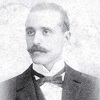
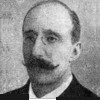
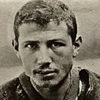
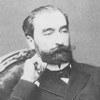
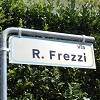
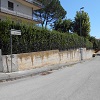

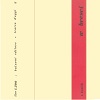
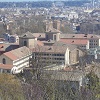
BIBLIOGRAPHIC
REFERENCES:
AdS
- Archivio di Stato di Roma - succursale di via Galla Placidia
- Fondo "Questura di Roma 1870-1905".
BADON Cristina (2018) Gli anarchici romani nella crisi di fine
XIX secolo: una storia da riscoprire. Storia e Futuro, Issue
48, December 2018. link
BELLOFIORE
Sara (2003) Voce "Frezzi, Romeo". Dizionario biografico
degli anarchici italiani, Biblioteca Franco Serantini. Ddigital
library link
BOCCIANTI Emanuele, RAMACCI Sabrina (2013) Italia giallo e nera.
Newton Compton Editori, Rome, Italy.
CALENDARIO GENERALE del Regno d’Italia pel 1898. Tipografia
Ditta L. Cecchini Editrice, Rome, Italy. 1898.
CECCARELLI Bianca (1984) Mio padre, l'anarchico. Gesualdi,
Rome, Italy., pp. 27-30.
COLETTI Alessandro (1971) Anarchici e questori. Marsilio, Padua,
Italy.
COLONNELLI Igino (2008) Giuseppe Moscatelli, Moschino: vita di
un muratore costruttore di case e di uomini: storia di una città:
un racconto a più voci. Halley, Matelica, Macerata,
Italy.
D’ORSI
Angelo (1972) Il potere repressivo. La polizia. Le forze dell’ordine
italiano, Feltrinelli, Milan, Italy.
DA
PASSANO Mario (2005) Il «delitto di Regina Cœli».
Diritto e Storia, n.4 - In memoriam - Da Passano link
DE JACO Aldo
(editor) (1971) Gli anarchici. Cronaca inedita dell’Unità
d’Italia. Editori Riuniti, Rome, Italy.
DELL'ERBA Nunzio (1983) Giornali e gruppi anarchici in Italia
: (1892-1900). Franco Angeli Editore, Milan, Italy.
FASANELLA Giovanni, GRIPPO Antonella (2012) Intrighi d'Italia.
Sperling & Kupfer, Milan, Italy.
FEDELE Santi (2003) Nicola Barbato. Un milite dell'ideale. Lacaita,
Manduria, Taranto, Italy.
FELDBAUER Sergio (1969) Attentati anarchici dell'ottocento. Mondadori,
Milan, Italy.
FELISATTI Massimo (1975) Un delitto della polizia? Morte dell'anarchico
Romeo Frezzi. Bompiani, Milan, Italy.
G.A.R. (Gruppi Anarchici Riuniti) (1981) 29 luglio 1900. La
Cooperativa Tipolitografica, Carrara, Italy.
GRELLA Pasquale (1987) Appunti per la storia del movimento
anarchico romano dalle origini al 1946. De Vittoria, Rome,
Italy.
KEZICH Tullio (1977)
W Bresci: storia italiana in due tempi. Bulzoni, Rome, Italy.
L.S. (2004) La chiusura del circolo socialista di Potenza alla
fine dell'800. Redazione Consiglio Informa, February 23rd, 2004. link
MASINI Pier
Carlo (1981) Storia degli anarchici italiani nell'epoca degli
attentati. Rizzoli, Milan, Italy.
ORTALLI Massimo (2011) Gaetano Bresci, tessitore, anarchico e
uccisore di re. Nova Delphi, Rome, Italy.
SALETTI Giulio (2012) Romeo Frezzi, ovvero il caso Pinelli di
fine Ottocento. Linkiesta, December 12th, 2012 link
SANTOLONI Marcello, MARCUCCI Nicola (1981) Gli ingranaggi del
potere. Il caso dell'anarchico Acciarito attentatore di Umberto
I, Ianua, Rom, Italy.
TARANTINI Domenico (1975) La maniera forte : elogio della polizia
: storia del potere politico in Italia, 1860-1975. Bertani,
Verona, Italy, pp. 63-64.
Websites visited:
Federazione
Anarchica Italiana (F.A.I.) http://www.federazioneanarchica.org/
Digital Library
of the Italian Senate of the Republic Avanti! http://avanti.senato.it/avanti/controller.php?page=archivio-pubblicazione
Sobre la
anarquía y otros temas - Romeo Frezzi (vida y obra) 14
agosto 2018 (in Spanish) link
 page
created: August
17th, 2019 and last updated: August 21st, 2024
page
created: August
17th, 2019 and last updated: August 21st, 2024